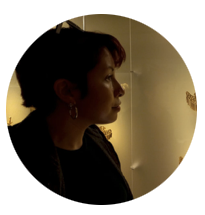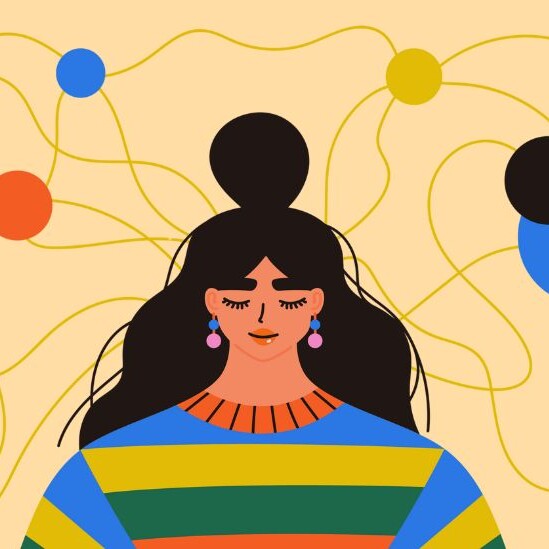This post, written by Resonance Network’s Kassamira Carter-Howard and Yesenia Veamatahau, originally appeared on Education Reimagined’s blog here and The Reverb here.
“A lattice is a repeating, interlaced structure that is strong and expansive enough to encourage and hold space for a diversity of community contributions. It exists to hold and support, not limit or control.” ~ Kassamira Carter-Howard, Director of Programs, Resonance Network
Resonance Network is a growing community of over 3,000 Black, Indigenous, immigrant, women, femme, trans, and two-spirit people, and their co-conspirators, who believe a world beyond violence is possible and within reach.
We are healers, leaders, artists, survivors, and storytellers; many of us with roots in movements to end domestic and sexual violence. As our network and strategy have evolved, we’ve come to understand that in order to end such harm, we must make visible the roots of the dominant worldview that has created conditions for interpersonal and structural violence to be the norm in all aspects of our daily life.
While our work does not specifically address education systems, we recognize the ways inequitable systems interlock. And we know that in order to build the world beyond violence that we envision, it is going to take all of us, no matter the field or discipline we work within. For this reason, we’ve chosen to organize from a values-based, rather than an issues-based, approach, in order to make room for all contributions. As the saying goes, “A rising tide lifts all boats.”
Our respective visions for both young people and adults include autonomy as a key pillar. We foresee a world rooted in mutual care, dignity, and our capacity to thrive. As a network, we have been on a shared path of learning and practice to discover what it takes to build the future we seek. By making this path visible, we invite you to join us and use any of the approaches we offer that you find useful in your own work.
Along the way, we’ve learned about the importance of governance in shaping our lived experiences. In our current culture, few of us have been given the opportunity or support to practice governance; rather, our ability to choose and consent has been widely interfered with.
In 2020, we offered the WeGovern principles as guidance for practicing governance, inspired by a rich history of Indigenous traditions that center caring for the earth, natural resources, community, and collective well-being. We set the intention to root our governance practice in consent-based decision-making, with the help of Circle Forward, as well as the exercising of agency to create thriving for ourselves and the people and places we belong to.
The following year, we collaborated with the reSet Project to launch the WeGovern Learning Community, a year-long, co-designed experiment to understand what it would mean to apply the WeGovern principles in our own lives. Alongside 18 participating teams, we explored the challenges, lessons, and breakthroughs of claiming and practicing collaborative governance in our relationships, homes, workplaces, and communities. Resonance staff knew we had much to learn from our peers and made an intentional choice to form our own team. This meant that we held the role of participants, as well as conveners, of the Learning Community space.
The year-long commitment to practice collective governance transformed us individually and as a team in ways we could not have imagined. We are grateful to share some stories of how our transformation is unfolding and look forward to more of our fellow practitioners speaking to their experiences.
“What has sustained us through this transformation process is the muscle memory we’ve strengthened together that grounds us. We leaned into trusting the power of practice, and as a result, new capacities and formations have begun to take shape among the team.” ~Yesenia Veamatahau, Program Manager, Resonance Network
We’ll be honest: collective governance is hard! As we took on the practice of consent-based decision-making, we realized it takes a lot more time, care, patience, compassion, and space than many of us are used to giving or receiving in our places of work or study. Though we recognized the importance of consent in the purposeful choice-making that governance is built on, we realized that the desire to be in consent was not enough. We needed to actually develop the culture and infrastructure to make it possible for our team to cultivate consent together. We needed to shape an environment where it was okay to make mistakes, be messy, and face uncertainty with curiosity.
We learned that it takes time to recognize and surface all the different elements of a decision. Decisions that often seem simple on the surface actually contain a multitude of complexity. It requires care and patience to actively listen to what people have to say and sit with how that aligns (or doesn’t) with your own needs and perspective, in order to ultimately arrive at a place of shared understanding to move forward together.
And sometimes, consenting to a shared path forward does not mean we have reached a full consensus. So we do our best to find ways to balance the needs expressed within the group, while remaining within each person’s range of tolerance.
We’ve also learned it takes practice to connect with our bodies in order to sense and vocalize what we’re feeling, recognize the cues our nervous systems give us when we’re in consent or not, and then be able to trust others in the group to receive these truths. Our work moves at the speed of trust, and this is only made possible because of the depth of connection cultivated within our relationships through consistency and practice.
For the Resonance team, answering the call to live into the WeGovern principles has illuminated multiple sites of governance, beginning with our bodies and rippling outwards to include our communities and the earth. This awareness has allowed us to recognize points of intervention where the act of showing up and making different choices has the power to transform our lived experiences. We’ve noticed that as we build the capacity to exercise our agency purposefully, patterns of harm and survival slowly give way to patterns of mutual care and thriving. Still, we wondered how we might sustain this transformation long-term, integrating what we’ve learned into all aspects of our team culture and practices.
In Resonance spaces, we often look to the natural world for wisdom on how to meet the challenges and questions we’re faced with. A lesson that’s been offered to us consistently is that though it can help us feel more stable, having more control is not always better.
We take the cautionary tale of commercial citrus orchards, one of the most rapidly expanding industry crops worldwide. Controlled by corporations who prioritize productivity and profit, these orchards disrupt biodiversity by mass-planting single tree species in distanced rows, introduce harmful pesticides to local environments, and accelerate soil depletion and erosion. Decisions about how to treat the trees lead to decisions about how to treat the people whose labor is exploited to harvest from the trees.
Our takeaway: infrastructure matters. And what we need is an infrastructure that can hold the diversity that exists within our network. What, then, would our governance infrastructure be?
We knew we did not want to replicate harmful, extractive infrastructures built to prioritize productivity and profit over mutual well-being. So, we searched for other natural infrastructure and patterns that do create space for diversity and interdependence. Bees taught us a lot about how to make this possibility a reality. The hexagonal lattice structure seen in honeycombsoffered us a great deal of insight. A lattice is a repeating, interlaced structure that is strong and expansive enough to encourage and hold space for a diversity of community contributions. It exists to hold and support, not limit or control.
The learning and practice of consent led us into bigger-picture conversations about our internal infrastructure and how it could support us in living up to our vision as a generative and resourced network. When the Resonance team agreed to ease up on control, we were able to recognize the real opportunities to create meaningful impact in our day-to-day decisions, including making space for other voices in our network to be heard. We realized that taking the time to focus on our own growth and move at a pace that aligned with our values would allow the path ahead to become clear.
This series of small decisions catalyzed a metamorphosis process that we have been in for over 6 months together. At several points along our governance journey, we felt ourselves swimming in what feels like foggy chaos, wondering how to move forward when it seemed all the ways we’d learned to carry out our work needed to be changed.
What has sustained us through this transformation process is the muscle memory we’ve strengthened together that grounds us. We leaned into trusting the power of practice, and as a result, new capacities and formations have begun to take shape among the team.
In addition, we have chosen to make different decisions regarding how we want to support our growing network. In practice, this has looked like reimagining our approach to developing a 3-year strategy. We are choosing to prioritize localizing and decentralizing our governance practices and processes to create space for others in our network to be “seen, valued and recognized,” as stated in one of 15 WeGovern principles.
Rather than hold our objectives as separate pillars that mirror the tree plantation rows preferred by capitalist corporations, we view them as interlacing strategies that weave together to create pockets of space for other network participants to contribute, very much like a lattice. This journey has not been easy, but it has made all the difference.
We offer our stories with the hope that they will spark you in your own journeys of exploring and practicing collective governance. This is a path best traveled in good company, and we are always happy to welcome new faces to the growing network. Join us by affirming your commitment to practicing the kind of governing together that can build a world beyond violence at we-govern.org.

Kassamira Carter-Howard (she/her) is an artist, facilitator, healer, organizer, and advocate with a decade of experience in social justice movements. Using an intersectional framework, she explores ways to practice reimagining a world free from violence. Kassamira combines her creative art practice with her commitment to ending violence against black women and girls to create trauma-informed, survivor-centered healing spaces.

Yesenia Veamatahau (they/them) lives and learns in East Oakland || Huichin, with family roots stretching back to the 70’s. The Pacific Ocean links their folks along the lands of California, México, Tonga, and back. Their experiences as a youth organizer, data nerd, ops wizard, plant guardian, and culture worker form a spider’s web pattern, weaving space for healing and thriving.
featured image by Simon Kadula on Unsplash

Network Weaver is dedicated to offering free content to all – in support of equity, justice and transformation for all.
We appreciate your support!



